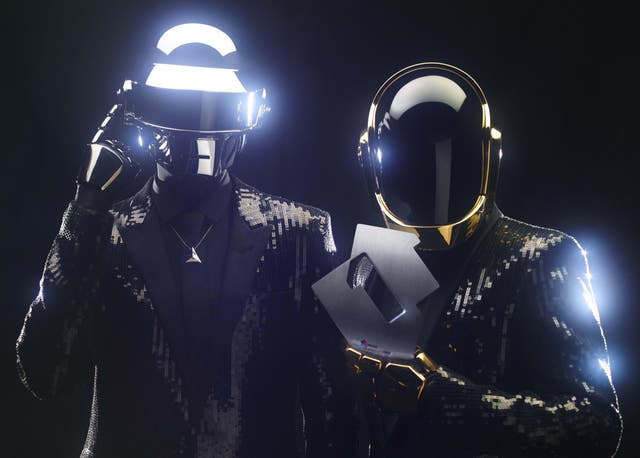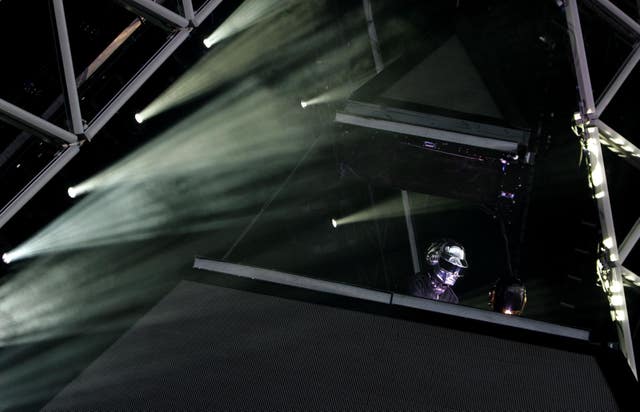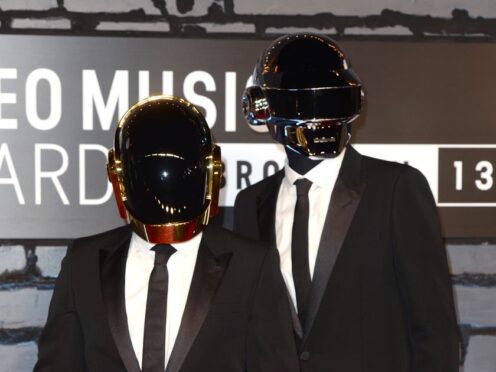Daft Punk musician Thomas Bangalter said he is relieved he can look back on the group’s nearly 30-year career feeling like they “didn’t mess it up too much”.
The French electronic music duo, who formed in Paris in 1993, split in 2021 after 28 years together.
Speaking on BBC Radio 6 Music, Bangalter reflected on why they decided to call time on the group and what inspired their signature robot helmet-look.

Bangalter said: “I think there’s a connection between fiction and reality and everything we did was the different chapters in the story.
“And a story by definition has a beginning, a middle and an end… It’s as if every reason or every clue in that semi-fictional or semi-autobiographical body of work as a partnership is disseminated inside.
“The question I ask more myself is why we did end it rather than how long could it last for so long.”
He continued: “We were very critical, me and Guy-Man, on the history of rock and roll – of all these bands that eventually… start to be disconnected and age… and we didn’t think that we could get away with it either.
“When we started I was 18 and when we ended Daft Punk I was 46. It’s been a significant part of my life but I am relieved and happy to look back on it and say ‘okay we didn’t mess it up too much’.”
The French musician and producer admitted the group took “a lot of discipline and effort” and that he felt it had run its natural course.
“Sometimes there’s a TV show or something that has a special place in people’s heart and it keeps that place and it runs for one, two, three, four, five, sometimes 10 seasons”, he said.
“And there’s a moment where it ends and I think it’s actually interesting to have this opportunity to start, have the middle and to end it.”
Daft Punk were among the most influential electronic music acts of the last 30 years, winning six Grammys and a Brit among other awards.
They formed in Paris in 1993 and helped to pioneer the French house movement of the 90s, which also included acts such as Stardust and Cassius.
They released their debut album Homework in 1997 which helped propel them to fame as it was a critical and commercial success, spawning hit singles including Around The World and Da Funk.
Around the release of their debut record, the group started playing with the idea of creating robotic personas after they had often being intrigued with plastic or clown masks.

Bangalter said: “I really remember thinking it would be fun to just have some special effects guys from Hollywood do these personas – robotic personas like if they were part of the cantina scene in Star Wars or something like that.
“It was a weird idea and neither me nor Guy-Man ever imagined it would end up taking such proportions where it just seemed like a very weird idea to mix these ideas that you would get from watching a sci-fi movie.
“There’s been the Kiss make-up or The Residents’ eye and what could be fun to play around with an imaginary character.”
With the release of their 2001 follow-up Discovery, they began wearing their famous robot outfits during both concerts and public appearances, including press, and would often perform at festivals from the top of a giant pyramid.
Their final album came in 2013 with Random Access Memories, which featured the singles Get Lucky and Lose Yourself To Dance and collaborations with artists including Nile Rodgers, The Strokes frontman Julian Casablancas, Pharrell Williams and more.
